Permissions
Once you've electrified a table, you can grant and assign permissions to read and write the data in it using the GRANT and ASSIGN DDLX statements.
Permissions are not yet implemented. See the Roadmap for more information.
1. Grant permissions to roles
Grant permissions to roles using the GRANT statement.
In the example below, we grant ALL permissions on projects to the project owner and SELECT permissions to the project members:
ELECTRIC GRANT ALL
ON projects
TO 'projects:owner';
ELECTRIC GRANT SELECT
ON projects
TO 'projects:member';
See API -> DDLX for more details on how to grant and revoke permissions.
2. Assign roles to users
Assign roles to users using the ASSIGN statement.
In the example below, we assign the role of project owner to the user whose authenticated user_id matches the project's owner_id column. And we use a join table of project_memberships to assign the role of project member.
ELECTRIC ASSIGN 'projects:owner'
TO projects.owner_id;
ELECTRIC ASSIGN 'projects:member'
TO project_memberships.user_id;
Notice the different syntax for a role and a column. There are a number of ways of defining roles. Here they're defined using a string literal with a : as a delimiter. This indicates that the role is scoped to the projects table and is assigned on a row-level basis.
Also note that there is an inferred foreign key relationship between the project_memberships table and the projects table. (This can be specified explicitly [ USING <scope path>] when ambiguous).
What we get as a result is a highly flexible, dynamic, row-level security system that builds on the structure and contents of your existing data model.
See API -> DDLX for more details on how to assign and unassign roles to users.
Permission scopes
One of the powerful things about ElectricSQL is the ability to define Shapes of data that sync as a unit onto the local device.
For example, you can choose to sync a project with all its issues and comments:
await db.projects.sync({
where: {
id: 'abcd'
},
include: {
issues: {
include: {
comments: {
author: true
}
}
}
}
})
With this, it would be tedious to have to define roles on each of the tables in order to assign permissions to access the data. What you really want is to define a role at the top level -- like a project owner or member -- and then to have that role cascade down to, or be inherited by, the content that's coming in underneath the project as part of the shape.
That's what permission scopes are for. They simplify your access rules in a way that maps to the structure of your shapes:
ELECTRIC GRANT ALL
ON issues
TO 'projects:owner';
ELECTRIC GRANT ALL
ON comments
TO 'projects:owner'
USING issue_id/project_id;
ELECTRIC GRANT READ
ON users
TO 'projects:owner'
USING comment_author_fkey/issue_id/project_id;
Here the first statement assumes an unambiguous foreign key path between the issues and projects tables. The second statement demonstrates explicitly specifying the foreign key traversal path. The third demonstrates specifying part of the scope path using a named fkey (the comment_author_fkey, which belongs to the comments table not the users table).
Directionality
Whilst your overall Postgres data model is often a cyclical graph (with multiple relationship pathways between tables), permission scopes must be directed and acyclical. In this regard, scopes are the same as Shapes which are also directed and acyclical. The difference between the two is that:
- scopes are used database-side to control which data users are allowed to sync
- shapes are used client-side to control which data is actually synced
When a shape subscription is established, the shape provides the actual traversal hierarchy through which permissions are looked up. For data access to be authorised, this traversal hierarchy must map to a predefined permission scope.

More information
See API -> DDLX specification for more details.